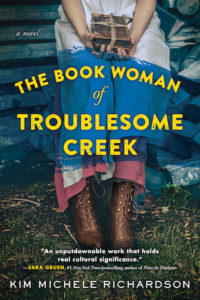
As a strong supporter of books, knowledge and education, it was heartwarming for me to see the role books played in the lives of the hill people. Under the depression many people didn’t have access to libraries and with starvation and hardship dominating life in the mountains, the book deliveries meant everything. The Kentucky library project was a Works Progress Administration (WPA) program under Roosevelt, which had books delivered to remote regions in the Appalachian Mountains between 19. The mystery of the blue people kept me intrigued as well. The author has clearly done some thorough research and reading about the lives of the hill people in Kentucky was fascinating. The biggest bonus was all the things I learned. The job as a riding librarian was a dangerous one Įventually, I got used to Richardson’s writing and started to enjoy the story. I also found some of the characters one-dimensional either unequivocally good and selfless or bad and filled with hate.Īdd to that an audiobook narration described by Grab the Lapels as the most corn-bred hillbilly accent I’ve ever heard, and I was starting to have my doubts. The drama which interrupted the book delivery scenes felt exceedingly theatrical. There are numerous slow, descriptive book delivery scenes, which are lovely, but eventually they became too sameish for me. The uneven tone is reflected in the dramatic structure.

Other parts were harsh and brutal and themes like marital rape, suicide, violence, racism and death from starvation are an integrated part of the storyline. The protagonist Cussy Mary (one of the last blue people) rides around on an adorable mule with a personality of its own and delivers books to the hill people in some very endearing scenes. Some parts were cosy, bordering on sentimental.

In the beginning, everything felt so unfamiliar. It took me a while to settle into the story.


 0 kommentar(er)
0 kommentar(er)
